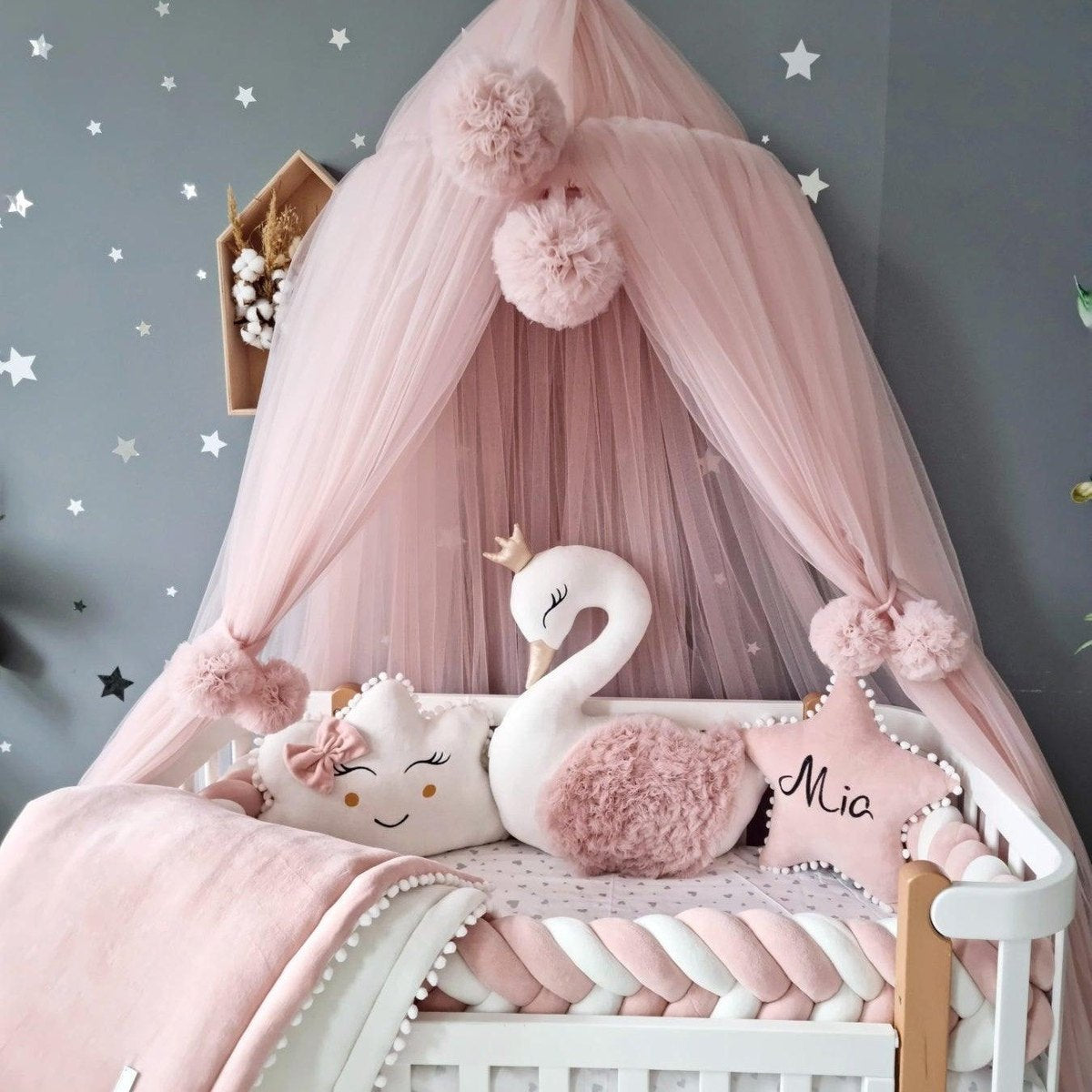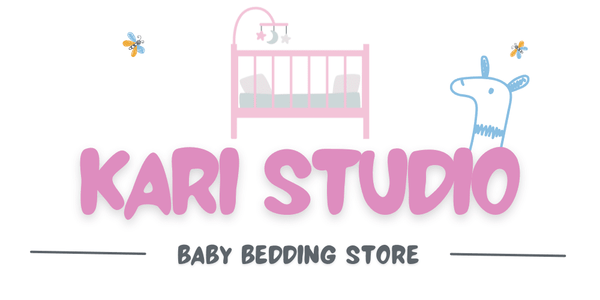Moving your child from a crib to a big-kid bed marks a huge step, and it shapes far more than just where they sleep. Some parents are surprised to learn that children who navigate this transition with support actually show better emotional regulation and cognitive growth according to Stanford researchers. Skipping over this moment or rushing it could mean missing out on critical life skills your child is ready to absorb.
Table of Contents
- What Is The Crib Transition And Why Is It Important?
- Signs That Your Child Is Ready To Transition From Crib
- The Impact Of Transitioning On Child Development
- Different Options For Sleep Arrangements After The Crib
- Considerations For A Smooth Transition Process
Quick Summary
| Takeaway | Explanation |
|---|---|
| Recognize readiness indicators for transition | Look for physical, behavioral, and emotional signals to determine when to move to a new bed. |
| Create a positive narrative around the transition | Present the move from crib to bed as an exciting milestone to ease anxiety for your child. |
| Maintain consistent bedtime routines | Keeping familiar sleep rituals helps children feel secure during the transition process. |
| Choose the right bed type for safety and comfort | Select a toddler or convertible bed that meets your child’s developmental needs. |
| Be patient and adaptable throughout the process | Each child transitions differently, and it’s crucial to respond sensitively to their unique journey. |
What is the Crib Transition and Why is it Important?
The crib transition represents a significant developmental milestone in a child’s early life, marking a pivotal moment when an infant moves from their secure sleeping environment to a more independent sleep space. This process is far more nuanced than simply changing furniture.
Understanding the Concept of Crib Transition
A crib transition involves moving your child from their initial infant sleeping space to a different bed type, typically a toddler bed or a larger youth bed. This transition is not just about physical relocation but also represents an important psychological and developmental step for both the child and parents.
Learn more about convertible cribs that make this transition smoother that can adapt as your child grows. These specialized cribs provide a gradual, less disruptive pathway to independent sleeping.
Key Developmental Considerations
The importance of the crib transition extends beyond mere sleeping arrangements. It represents a critical developmental stage that supports:
- Physical Safety: Ensuring the child cannot accidentally climb or fall out of their sleeping space
- Emotional Independence: Helping children develop a sense of personal space and autonomy
- Sleep Skill Development: Teaching self-soothing and independent sleeping techniques
According to pediatric sleep research from Stanford University, children who successfully navigate sleep transitions demonstrate better emotional regulation and cognitive development. The process requires careful planning, patience, and understanding of your child’s unique developmental needs.
The transition is not a one-size-fits-all process. Each child develops differently, and parents must be attentive to individual readiness signals. Factors like age, physical capabilities, emotional maturity, and overall comfort play crucial roles in determining the right timing and approach for moving beyond the crib.
Signs That Your Child is Ready to Transition from Crib
Recognizing when your child is prepared to move from a crib to a toddler bed requires careful observation and understanding of developmental milestones. Parents must look beyond age and consider multiple physical, behavioral, and emotional indicators.
Physical Readiness Indicators
Physical signs are often the most immediate and noticeable signals that a child might be ready for a bed transition. Height and mobility become crucial factors in determining bed readiness. Children who can climb out of their crib or whose head-to-height ratio makes the crib feel constraining are prime candidates for transitioning.
Explore our comprehensive guide on choosing the right crib to understand size and safety considerations during this critical developmental stage.
Behavioral and Emotional Maturity Signals
Beyond physical capabilities, emotional readiness plays a significant role in successful crib transition. Key behavioral signs include:
- Verbal Communication: Ability to express needs and understand basic instructions
- Demonstrated Independence: Showing interest in making personal choices
- Sleep Routine Consistency: Maintaining regular sleep patterns
According to child development research from the American Academy of Pediatrics, children typically demonstrate transition readiness between 18 months and 3 years. However, individual variations are substantial and should not be overlooked.
The transition is not merely about changing sleeping arrangements but represents a profound developmental milestone. Parents must approach this shift with patience, understanding, and attentiveness to their child’s unique developmental journey.
The Impact of Transitioning on Child Development
The transition from crib to bed is more than a physical change in sleeping arrangements. It represents a profound psychological and developmental milestone that significantly influences a child’s cognitive, emotional, and social growth.
Psychological Autonomy and Self Regulation
Moving to a new bed is a critical experience in developing psychological independence. Children learn crucial self-regulation skills during this transition, understanding boundaries, personal space, and the ability to manage their own sleeping environment. This process helps them build confidence and develop a sense of personal agency.
Discover safety considerations for creating the ideal sleep environment that supports healthy developmental transitions.
Cognitive and Emotional Development Impacts
The bed transition phase triggers multiple developmental benefits:
- Spatial Awareness: Learning to navigate and understand personal boundaries
- Decision Making: Practicing independent choices within safe parameters
- Emotional Resilience: Building comfort with changes and new experiences
According to developmental research from the National Institutes of Health, transitions like these are instrumental in building neurological pathways that support future learning and adaptation.
Critical to this process is parental approach. Supportive, patient guidance during the transition can transform a potentially stressful experience into a positive developmental opportunity. By creating a nurturing environment that respects the child’s emerging independence, parents can help their children develop crucial life skills and emotional intelligence.
Different Options for Sleep Arrangements After the Crib
The transition from a crib opens up multiple sleeping arrangements that can support your child’s developmental needs and comfort. Understanding these options allows parents to make informed decisions that best suit their child’s unique requirements and home environment.
Toddler Beds: A Gradual Transition
Toddler beds represent the most common and recommended first step after outgrowing a crib. These specialized beds are designed with low side rails, providing a sense of security while offering more space and independence. They typically use the same mattress size as a crib, making the transition feel familiar and comfortable for young children.
Learn about creating safe sleep environments for your growing child to ensure a smooth and secure transition.
Alternative Bed Options
Beyond traditional toddler beds, parents have several strategic sleeping arrangements to consider:
- Twin Beds: Providing long-term sleeping solution with ample room for growth
- Floor Mattresses: Offering maximum safety and accessibility for very young children
- Convertible Bed Frames: Adaptable designs that can transform as the child ages
According to pediatric sleep research from the American Academy of Pediatrics, the primary considerations should always be safety, comfort, and supporting the child’s developmental stage. No single arrangement works universally, and parents must assess their specific circumstances.
The ideal sleeping arrangement balances physical safety, emotional comfort, and developmental support.
To help readers quickly compare the main post-crib sleep arrangement options discussed, heres a table summarizing their features and considerations.
| Sleep Arrangement | Description | Key Advantages | Main Considerations |
|---|---|---|---|
| Toddler Bed | Low bed with side rails, uses crib mattress | Safer for young children, familiar size | May be outgrown within a few years |
| Twin Bed | Standard single bed, larger size | Long-term use, ample space | Higher height, may require bed rails |
| Floor Mattress | Mattress directly on the floor | Maximum accessibility and safety | Less formal, may lack structure |
| Convertible Bed Frame | Adjustable frame that transitions from crib to larger bed | Cost-effective, adapts as child grows | Initial cost may be higher |
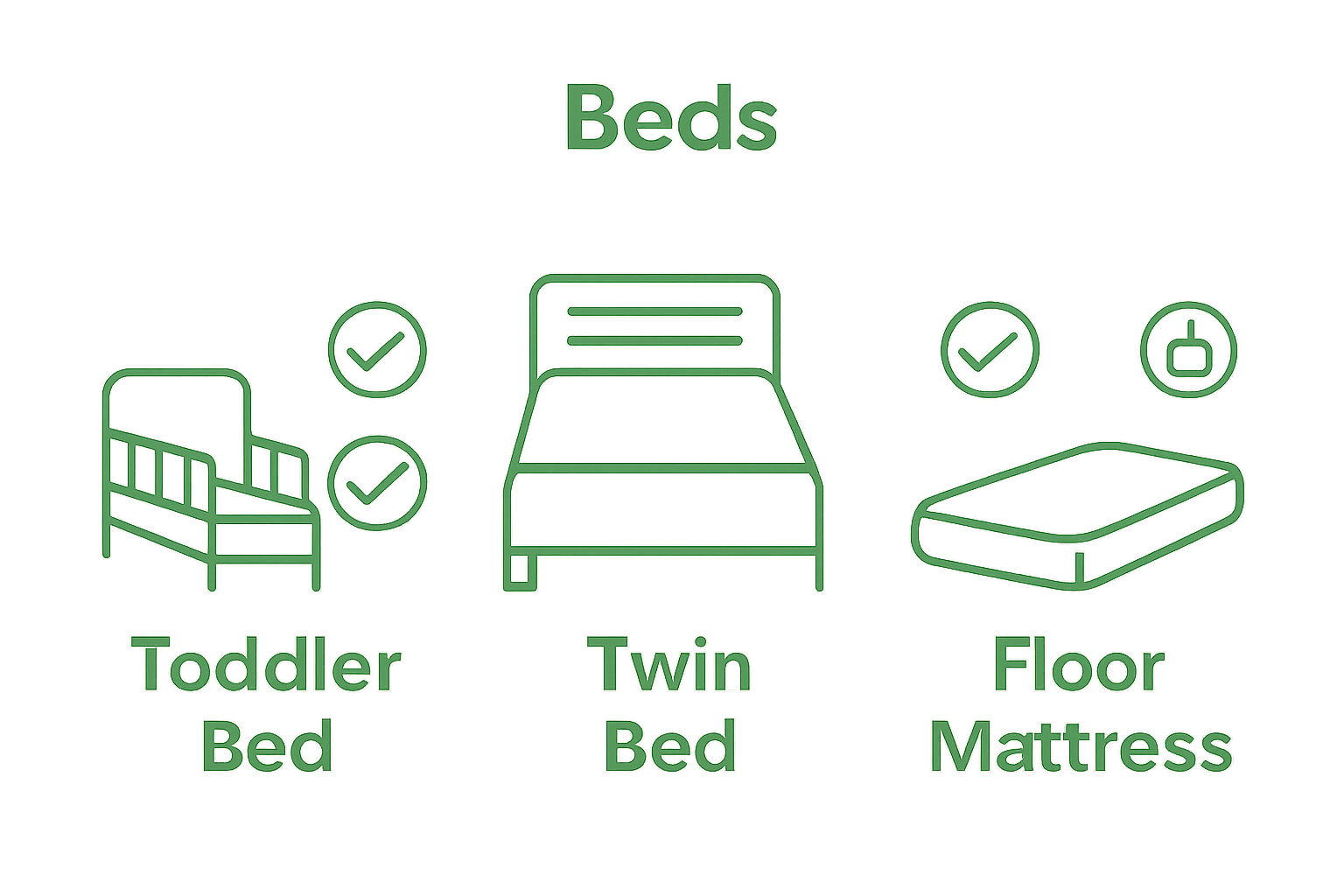 By carefully selecting a bed that meets these criteria, parents can create a nurturing sleep environment that promotes healthy growth and independence.
By carefully selecting a bed that meets these criteria, parents can create a nurturing sleep environment that promotes healthy growth and independence.
Considerations for a Smooth Transition Process
Successfully moving a child from a crib requires strategic planning, emotional intelligence, and an understanding of individual developmental needs. The transition is not merely a logistical change but a significant emotional journey for both parent and child.
Psychological Preparation Strategies
Emotional readiness is as crucial as physical readiness during bed transitions. Parents must create a positive narrative around the change, presenting it as an exciting milestone rather than a potentially frightening experience. This approach helps children feel empowered and secure during the transformation.
Explore our comprehensive guide on choosing the right sleeping arrangements to support your child’s unique developmental needs.
Key Transition Considerations
Effective crib transitions demand careful attention to multiple interconnected factors:
- Consistency in Bedtime Routines: Maintaining familiar sleep rituals
- Gradual Environment Adaptation: Introducing new sleeping spaces incrementally
- Positive Reinforcement: Celebrating and rewarding successful transitions
According to child development research from the National Sleep Foundation, children respond best to transitions that feel predictable and emotionally supportive. The goal is creating a sense of safety and continuity during what can be a potentially disruptive period.
Parents must remain patient and flexible, recognizing that each child’s transition experience is unique. By approaching the process with empathy, understanding, and strategic planning, families can transform this developmental milestone into a positive, confidence-building experience.
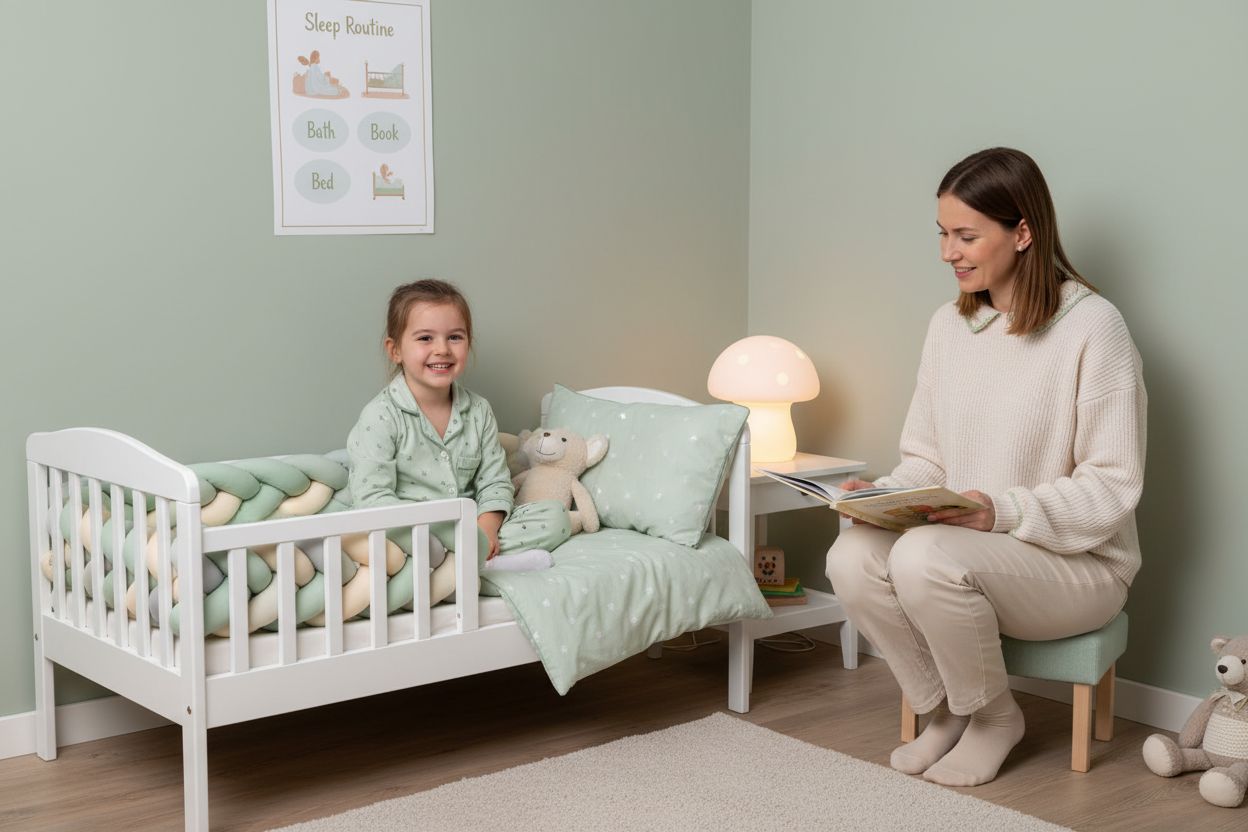
Make Your Child’s Crib Transition Safe and Comfortable
Are you feeling anxious about when and how to move your child from the crib? The crib transition can raise concerns about your little one’s safety, sleep quality, and sense of security. If you want a smooth and stress-free change, the right nursery products make all the difference. Many parents struggle to balance emotional reassurance for their child with practical needs like accident prevention and comfort.
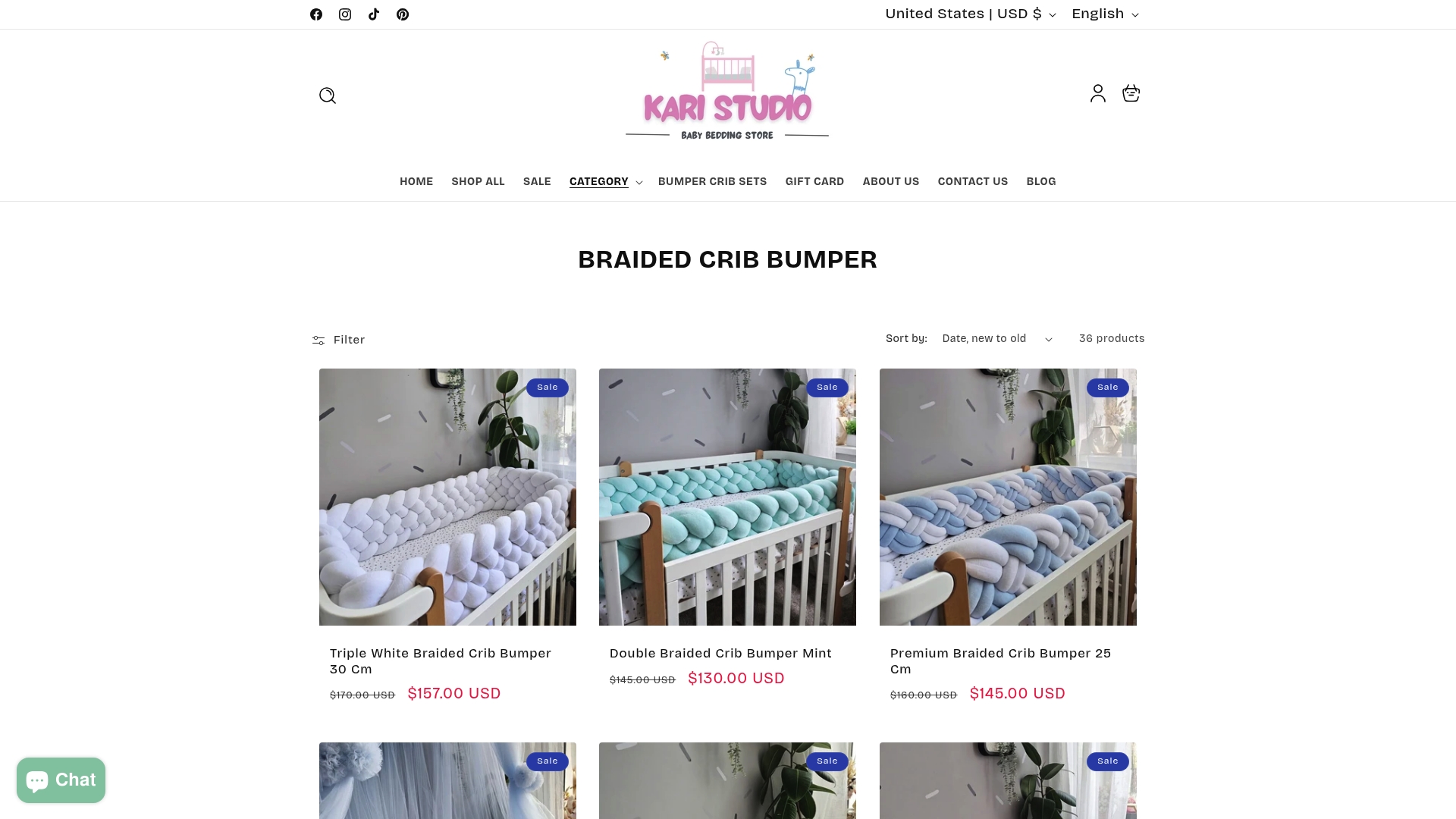
Set your child up for success during this milestone with our premium braided crib bumpers and nursery essentials. These soft and durable bumpers help reduce bumps and provide the cozy atmosphere children crave during transitions. Combine safety and style by shopping our collection today at Kari Studio. Give your child the comfort they deserve and take this important next step with confidence—browse now for fast international delivery!
Frequently Asked Questions
When is the right time to transition my child from a crib?
The right time to transition varies by child, but typically, children show readiness between 18 months and 3 years. Look for physical readiness indicators, such as climbing out of the crib, as well as emotional maturity, like consistent sleep routines and verbal communication.
What are the signs that indicate my child is ready for a bigger bed?
Signs of readiness include your child climbing out of their crib, feeling cramped in their crib, verbalizing their needs, showing a desire for independence, and maintaining a consistent sleep routine.
This table organizes the physical, behavioral, and emotional signals mentioned in the article to help parents easily recognize when their child may be ready to transition from a crib.
| Readiness Indicator | Description | Example Signs |
|---|---|---|
| Physical Readiness | Childs body size or ability to climb out of crib | Climbing out, feeling cramped in crib |
| Verbal Communication | Ability to express needs and follow simple instructions | Telling parent they want to get out, following bedtime cues |
| Independence & Choice | Demonstrating interest in making personal decisions | Selecting pajamas, asking to choose bedtime book |
| Routine Consistency | Maintaining regular sleep and waking times | Going to bed and waking up on schedule |
| Emotional Maturity | Comfort with new experiences and adapting to change | Eagerness about new bed, limited anxiety over transition |
What are the benefits of transitioning to a toddler bed instead of a twin bed?
Toddler beds provide a lower height and specialized side rails for safety, making them a more secure option for young children transitioning from a crib. They also typically use the same mattress size as cribs, offering a familiar sleeping environment during the change.
How can I make the transition from crib to bed smoother for my child?
To make the transition smoother, maintain consistent bedtime routines, gradually introduce the new bed, and use positive reinforcement. Create a positive narrative around the move to help your child feel excited and secure about this change.
